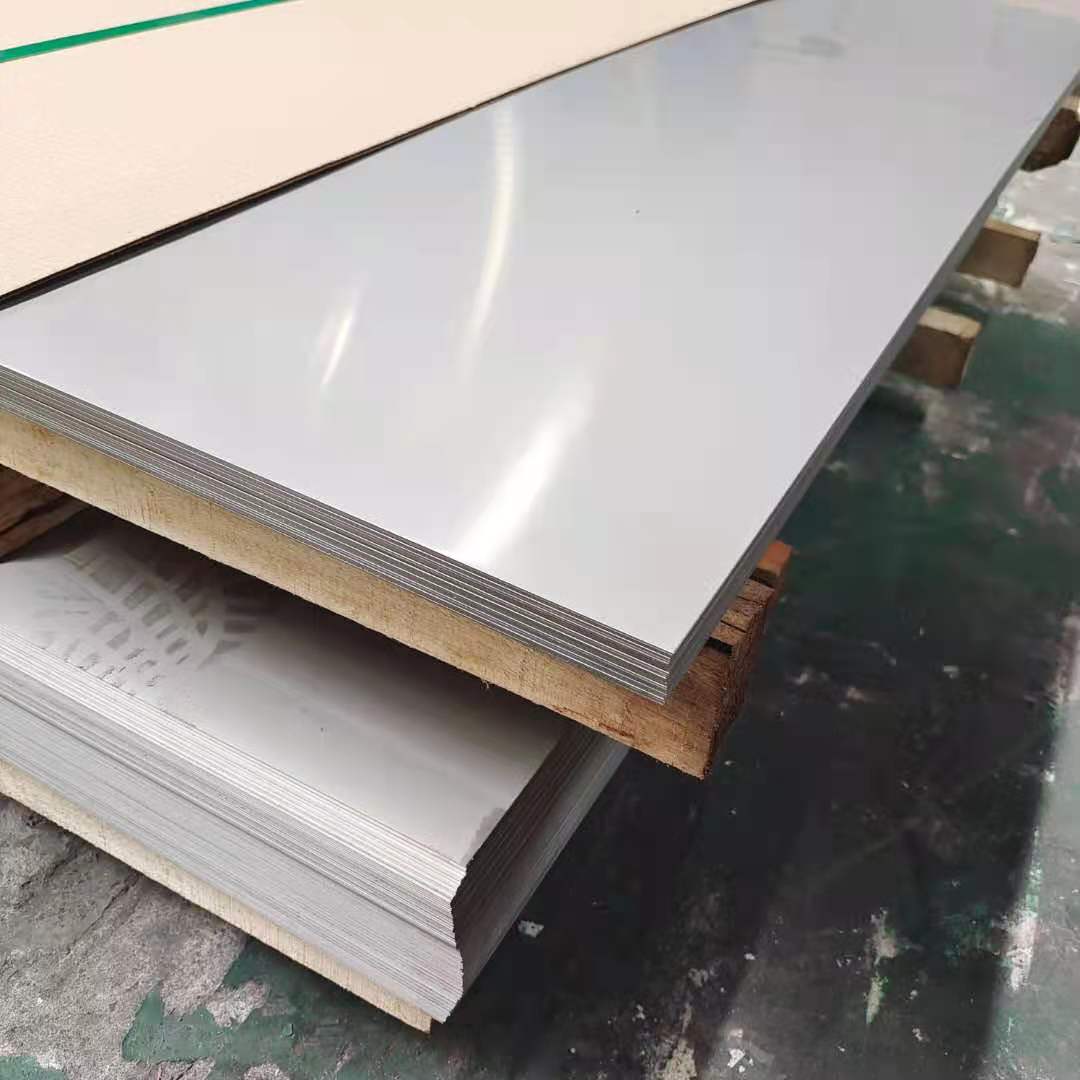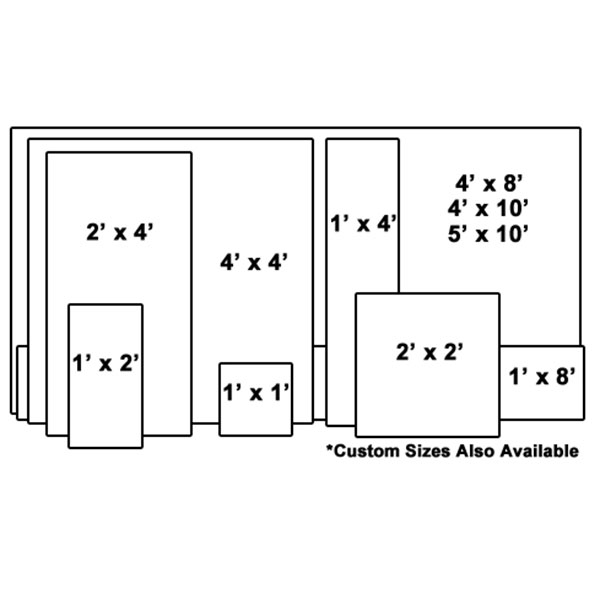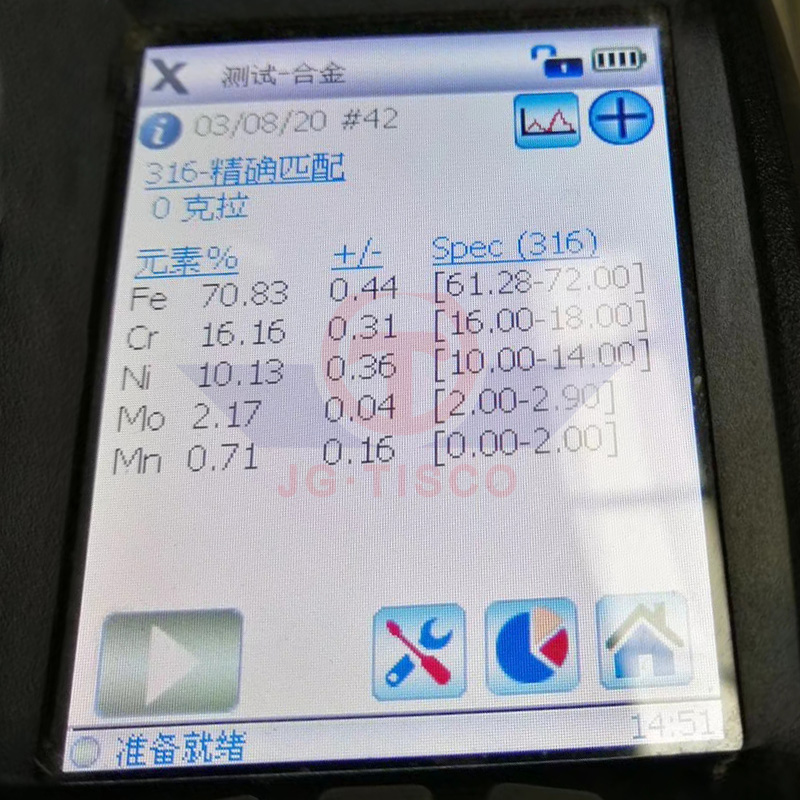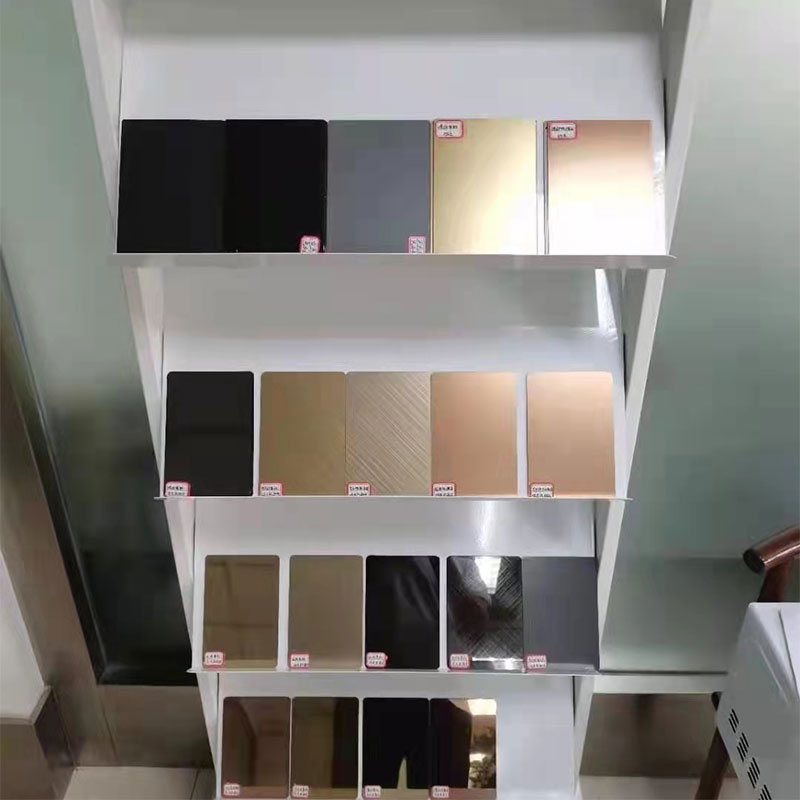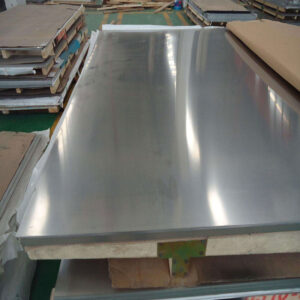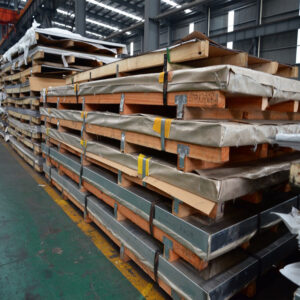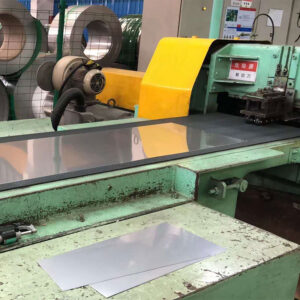Description
316L / 1.4404 Stainless Steel Sheet
Alternative products of the same model
| China * GB | GB24511 | 022Cr17Ni12Mo2 |
| Japan | JIS | SUS316L |
| United States of America | ASTM | 316L |
| UNS | S31603 | |
| South Korea | KS | STS316L |
| European Union | BSEN | 1.4404 |
| India | IS | ~02Cr17Ni12Mo2 |
| Australia | AS | 316L |
| Taiwan, China | CNS | 316L |
| Germany | DIN | X2CrNiMo17-12-2 |
| United Kingdom | BS970 BS1449 | 316S12 |
| Belgium | BS970Part1 | – |
Thickness data sheet
| Gauge No. | (also I.S.W.G.)(Imperial)standard Wire Gauge)used for sheet.wire.nails | (Bimingham Wire Gauge)used for wire | (Birmingham Gauge)used for European steelsheets | Standard U.S.Gauge for steel sheets | |||||
| mm | Common value | inch | mm | inch | mm | inch | mm | inch | |
| 12 | 2.642 | 2.6 | 0.104 | 2.77 | 0.109 | 2.517 | 0.0991 | 2.657 | 0.1046 |
| 14 | 2.032 | 1.8-2.0 | 0.08 | 2.11 | 0.083 | 1.994 | 0.0785 | 1.897 | 0.0747 |
| 16 | 1.626 | 1.5-1.6 | 0.064 | 1.65 | 0.065 | 1.558 | 0.0625 | 1.519 | 0.0598 |
| 18 | 1.219 | 1.2 | 0.048 | 1.24 | 0.049 | 1.257 | 0.0495 | 1.214 | 0.0478 |
| 20 | 0.914 | 1 | 0.036 | 0.89 | 0.035 | 0.9957 | 0.0392 | 0.912 | 0.0359 |
| 22 | 0.711 | 0.8 | 0.028 | 0.71 | 0.028 | 0.7938 | 0.03125 | 0.759 | 0.0299 |
| 24 | 0.559 | 0.5 | 0.022 | 0.56 | 0.022 | 0.6289 | 0.02476 | 0.607 | 0.0239 |
| 26 | 0.457 | 0.018 | 0.46 | 0.018 | 0.4981 | 0.01961 | 0.455 | 0.0179 | |
Standard Specification
| Thickness | 0.25mm-100mm |
| Width | 1000mm, 1219mm, 1500mm, 1800mm, 2000mm, 2500mm, 3000mm, 3500mm, etc |
| Length | 2000mm, 2440mm, 3000mm, 5800mm, 6000mm, etc |
| Surface | 2B, 2D, BA, NO.1, NO.4, NO.8, 8K, mirror, checkered, embossed, hair line, sand blast, Brush, etching, etc |
| Finish | Hot rolled plate (HR), Cold rolled sheet (CR), 2B, 2D, BA NO(8), SATIN (Met with Plastic Coated) |
| Form | Coils, Foils, Rolls, Plain Sheet, Shim Sheet, Perforated Sheet, Chequered Plate, Strip, Flats, Blank (Circle), Ring (Flange) etc. |
What is the difference between 316 and 316L?
1. Different ingredients
316L is ultra-low carbon, and L stands for low carbon, so the carbon content of 316L is lower than that of 316.
316 chemical composition C (carbon) ≤0.08, 316L chemical composition (%): C (carbon) ≤0.03
2. Different corrosion resistance
316L stainless steel has better resistance to intergranular corrosion and better anti-corrosion and anti-rust ability.
3. Different intensity
The strength of 316L material is lower than that of 316, which is convenient for processing.
Yield strength: 316 material is 210 (N/MM2), 316L material is 180 (N/MM2).
Tensile strength: 316 material is 520 (N/MM2), 316L material is 480 (N/MM2)
4. Different welding methods
The welded section of 316 stainless steel requires post-weld annealing treatment, while 316L stainless steel does not.
5. There are differences in grades
316 grade: the old grade is 0Cr17Ni12Mo2, and the new grade is 06C17N12M2, which is the American standard TP316 and the Japanese standard SUS316.
316L grade: The old grade is 00Cr17Ni14Mo2, and the grade is 022C17N12M2, which is the standard TP316L and the Japanese standard SUS316L.
6. Heat resistance
316 material can be used intermittently below 1600 degrees and continuous use below 1700 degrees, but it is best not to use 316 stainless steel in the range of 800-1575 degrees.
316L stainless steel has better resistance to carbide precipitation than 316 stainless steel, and it can also be used in the temperature range of 800-1575 degrees.
Chemical Analysis
Weight % (all values are maximum unless a range is otherwise indicated)
| Element | 316 | 316L |
|---|---|---|
| Chromium | 16.0 min.-18.0 max. | 16.0 min.-18.0 max. |
| Nickel | 10.0 min.-14.0 max. | 10.0 min.-14.0 max. |
| Molybdenum | 2.00 min.-3.00 max. | 2.00 min.-3.00 max. |
| Carbon | 0.08 | 0.030 |
| Manganese | 2.00 | 2.00 |
| Phosphorus | 0.045 | 0.045 |
| Sulfer | 0.03 | 0.03 |
| Silicon | 0.75 | 0.75 |
| Nitrogen | 0.1 | 0.1 |
| Iron | Balance | Balance |
What is the difference between cold rolled stainless steel and hot rolled stainless steel?
In simple terms, cold-rolled stainless steel plate is a steel plate with a thickness of less than 6mm and a bright surface of 2B.
Hot-rolled stainless steel plate is a steel plate with a thickness between 3mm and 16mm, and its surface has an industrial surface and a matt surface.
Hot rolled stainless steel
It uses slabs (mainly continuous casting slabs) as raw materials and is heated by roughing and finishing mills to produce strip steel. The hot-rolled steel strip of the finishing mill is cooled to a set temperature by laminar flow, and then coiled into a steel coil by a coiler. The cooled strip coils are processed into steel plates, flat coils, and longitudinal strips through different finishing lines (leveling, straightening, cross-cutting or slitting, inspection, weighing, packaging, marking, etc.) according to the different needs of users. Steel products.
Advantage:
1. Destroy the casting structure of the steel ingot, make the steel structure compact, refine the grains, and eliminate structural defects.
2. The toughness and ductility of hot-rolled stainless steel are relatively good, and the price is relatively low.
3. The torsion resistance of hot-rolled stainless steel is better than that of cold-rolled stainless steel.
shortcoming:
The results of the study are as follows:
1. The residual stress generated by uneven cooling leads to poor hot rolling deformation, stability and fatigue resistance of stainless steel.
2. The mechanical properties of hot-rolled stainless steel are far lower than cold-rolled stainless steel.
Cold rolled stainless steel is produced on the basis of hot rolled stainless steel coils. Generally speaking, it is the process of hot rolling→pickling→cold rolling. Although in the process of processing, because rolling will also make the steel plate warm, it is still called cold rolling. Since continuous cold rolling is used after hot rolling, the cold rolling mechanical properties are poor and the hardness is too high. It must be annealed to restore its mechanical properties. Hard coils without annealing are called rolled hard coils. Roll hardened coils are generally used to make products that are not bent or stretched.
Advantage:
1. The forming speed is fast, the output is high, and the coating is not damaged.
2. Strong plastic deformation ability and high yield point.
3. The surface of cold-rolled stainless steel has no oxide scale, good quality and high dimensional accuracy.
shortcoming:
1. Cold-rolled stainless steel has a small wall thickness, and its ability to withstand local concentrated loads is weak.
2. Residual stress still exists in the section of stainless steel after forming, which makes its cold rolling buckling performance worse.
3. Low toughness, easy to twist when bending, bending and torsional buckling when compressed, poor torsion performance, and more expensive.
Contact Us Now!
If you need product information or price, please fill in your contact information in the form below, we will usually contact you within 12 hours. You can also click on our email address info@shandongtisco.com to send us an email to get prompt reply.
Send me the inquiry,free samples and the most favorable quotation are waiting for you!
Supply Better Material for Project & Find Best Solution for Clients
Wish your business boom and all the best!
